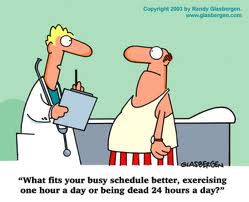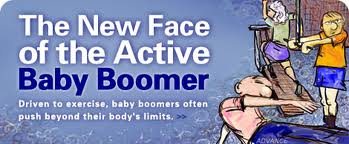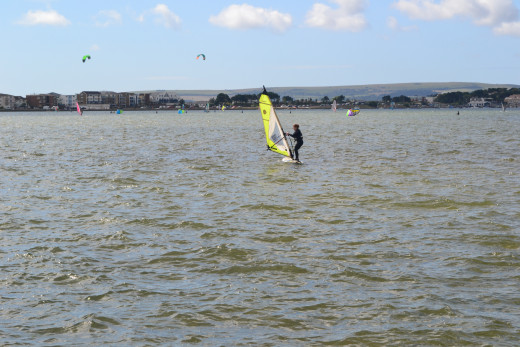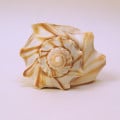Sports Exercise and Injury in Baby Boomer Population: What is soft Tissue Damage?
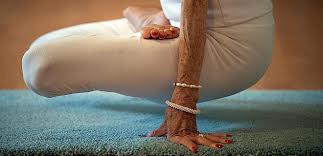
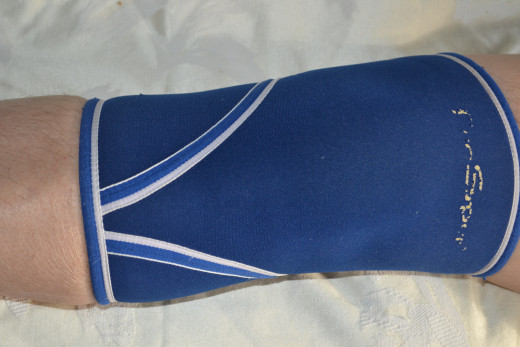
Sports Exercise and injury in Baby Boomer Population: What is Soft Tissue Damage?
Physical health
The World Health Organization (WHO) defined health as “a state of complete physical, mental and social well-being and not merely the absence of disease or infirmity.
By participating in sports and various exercise programmes, many baby boomers are hoping to achieve a state of health and well-being that will not only lengthen their lives but will also increase their quality of life. However; research shows that for many, the physical activities are taking its toll.
The number of older people seeking medical attention for exercise and sports related injuries are second only to the common cold.
Physical health or Fitness is affected by many factors, age, level of fitness, training, lifestyle, illness, injuries, diet, rest and our general physical and psychological state.
People of all ages and varying degrees of fitness are participating more in sports and exercise. Older people, more than ever before are increasing their levels of exercise to maintain good health, remain active and attain longevity. This is not necessarily because of the fear of growing old, It is quite simple really; people who exercise regularly, live longer than those who don't.
By the year 2030, the number of individuals 65, years and over will reach 70 million in the US alone. The fastest growing age group in the population will be those that are age 85 and older.
The evidence clearly shows that regular exercise is an effective way to prevent and reduce many of the body's decline in function associated with ageing. Unfortunately; many baby boomers are cramming sports and exercise sessions only at weekends; they are ignoring aches and pain resulting from the intense physical activity, thereby, increasing the risk of injuries.
According to a US Consumer Product Safety Commission Report, sports injuries among baby boomers has increased by 33 percent from 1991 to 1998 and continues to rise each year. Studies show that sports-related injuries in baby boomers are mainly from activities such as:
Bicycling, (66,000 treated/year)
Basketball (48,230 treated/year)
Skiing (28,150 treated/year)
Exercising and running (32,370 treated/year)
These statistics do not represent the whole picture as it does not take into account chronic conditions such as arthritis. The projection for the number of knee replacement is that it will increase by 675% by 2030.
Although some injuries can be serious, others are relatively minor, bruises and sprains added up to almost 90,000 injuries per year; this equates to a 42 percent increase in the past decade.
Should Older People continue to exercise and take part in sports?
The clinical instructor at Yale School of Medicine emphasized that the majority of these injuries are preventable. The explosion of injuries seen in senior baby boomers is numerous, so much so that the experts named it “Boomeritis.”
Although we are healthier for exercising more often, we are also getting injured more; we now need to take a look at ways to reduce the high incidence of sports injury in older people.
As I prepared for my caravan trip to Hampshire and Dorset last week, I was looking forward to many long walks in the New Forest and surrounding areas of the beautiful English countryside. However; the nurse in me could not help but ponder on those statistics and the possibility of injuries and accidents, but of course, we were well prepared and returned home relaxed and uninjured.
Getting injured is probably the last thing we want to think about when participating in sports and exercises, we tend to focus on the benefits, and rightly so, but we can achieve so much more from exercising if we can prevent or minimise such accidents. We can do this if we're well prepared. By taking decisive preventative action, we can reduce and even prevent sports injuries.
Exercise and sports can be fun for most of us, especially when we can see real results. We can achieve the desired results by taking certain steps when planning an exercise programme,
Before embarking on the keep fit journey the individual must consider age, fitness level, aims, and objective, personal ability, the amount of time available, and always set realistic and attainable goals.
For older people over 75 years of age, activities that increase mobility and life skills functions may be more appropriate, as mobility is usually impaired in this age group making them less likely to engage in vigorous activities.
Tips for exercising and preventing Injuries
- Planning, a
professional personal trainer is usually a good place to start, check out prices. It is always best to use a trainer recommended by someone you know and trust, the same goes for gyms. As mentioned above, age and level of fitness are high on the list of important consideration when starting your exercise programme. Start slowly, don't do too much too quickly, the recommendation is to increase workouts by no more than 10% per week as you progress.
- Warm up, before exercising this is especially important for older people, our tissue becomes less flexible as we age. The American College of Sports Medicine recommends exercise tolerance testing before older people begin a vigorous exercise program. However, with this age group, there are certain limitations in completing such tests adequately. Keep fit experts suggests, taking a few minutes to walk before stretching the back and the legs. Older muscles become less elastic making them more vulnerable to injury, stretching before and after workouts can help to increase the range of motion in joints and can also contribute to preventing injuries. The recommended time for warm-up is 10 to 15 minutes.
- Cool Down, like the warm-up, cool-down is also important, cool down period helps to loosen up muscles to make an easier recovery.
- Protection, appropriate safety protection should be worn. Safety protections include the wearing of a helmet when cycling, adults are twice as likely to die from head injuries as do children. Wrist guards for rollerblading, ageing bones are less dense and more brittle and are more prone to injury.
- Hydration, research shows that older individuals, particularly those who do vigorous activities on the weekends, do not drink sufficient fluids when exercising, especially when the weather is warmer. They experience not only dehydration but also heat exhaustion. Maintaining proper hydration helps the body to perform better, stay healthier and sustain fewer injuries.
- Know your body, Ditch the "No pain, No gain" attitude, know your body, next day pain is not an accurate measure of gain. Use ice on those muscles and get adequate rest when required. Always consult your doctor before embarking on a new workout programme.
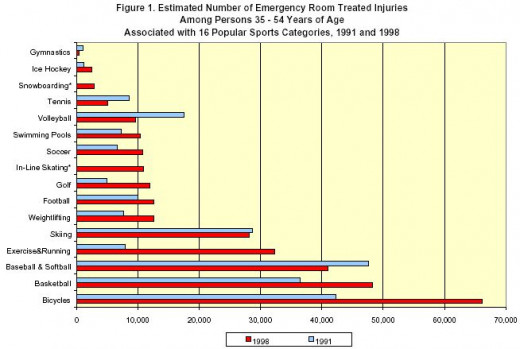
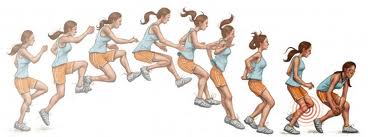
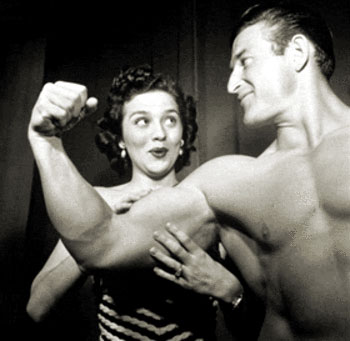


Best exercise program
Doing too much too soon is a sure way to get injured. The best exercise program is a carefully planned regular regime to maintain and improve general fitness.
The best exercise for all-around fitness should make the heart, lungs, muscles and joints work hard, examples include:
-
Cycling
-
Brisk walk
-
Swimming
-
Running
-
Jogging
-
Skipping
Also, consider:
- Leg extensions
-
Strength training
-
Water aerobics
- Yoga
Enjoyable ways to exercise and improve overall health includes taking part in a couple of different sports each week; this will help to keep the different range of muscles and joints active and improve the efficiency of the heart and lungs.
In addition to active exercise, it is important to improve joint flexibility. An individual can achieve a good level of joint flexibility, by doing exercises such as range-of-motion workout for about 10 minutes/day. Range-of-motion exercises will help to keep the joints supple and maintain muscle strength.
A well-planned program with sound knowledge of safe practice will help to achieve a good level of fitness and prevent injuries.
General Fitness
General fitness refers to the overall physical condition of an individual, from illness to peak condition. General fitness consists of four main components:
-
Endurance
-
Strength
-
Flexibility
-
Speed
The four elements are needed in varying proportions for different types of sports and exercise. Someone who runs long distances needs a higher level of endurance, a gymnast or ballet dancer requires strength and flexibility the sprinter needs speed and strength. It is possible to plan a training program for anyone by mixing the four main fitness components, depending on the chosen activity.
Research studies performed on men and women, 60 to 70 years old, to determine the effects of walking, jogging and cycling on strength, flexibility, speed and balance. Have provided evidence, that older adults can improve their functional capacity in response to exercise training significantly. Many of the adverse physiological changes that come with age are associated with a sedentary lifestyle.
There is 20 to 30% decrease in cardiac output by the age of 65. Maximum oxygen uptake decreases by approximately 9% and 5% per decade for sedentary men and women respectively (Elia, 1991).
The respiratory system has a 40 to 50% loss in forced vital capacity ( the total volume of air that can be moved in one breath voluntarily) and the maximum ventilation and alveolar size.
The muscular system has a 40% loss of muscle mass and 30% decrease in strength by age 70 (Rogers & Evans, 1993).
Where muscle fitness is concerned, it would seem that strength increases in our 30s, plateaus in the 50s to 60s then decline rapidly.
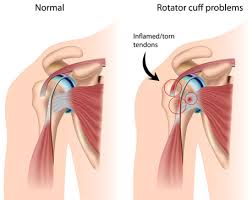
What is soft tissue damage?
Most common Sports injuries are soft tissue Injury
Soft tissue injury refers to damage to muscles, ligaments and tendons.
- Muscles consists of thousand of fibres bonded together within a sheath of connective tissue when the muscle fibres are overstretched or torn it results in a strain. Back pain is the second highest cause of doctors visits.
- Tendons are cords of tissues that connect muscle to bone to enable movement of bones and joints. When a tendon becomes inflamed, this is known as, tendonitis, it can be torn as in the rupture of the Achilles' tendon. Repetitive overhead movement of the arm can stress the rotator cuff muscles and tendons causing inflammation and tearing. Some tendons pass through a sheath lined with synovial membrane when inflamed; the condition is tenosynovitis.
- Ligaments are made up of fibrous tissue that holds bones together at the joints and can be overstretched or torn by wrenching of a joint resulting in a sprain.
- Sprains, dislocations and fractures account for almost 50% of all musculoskeletal injuries. Approximately 55 percent of sports injuries are to the knee, 7% to the elbow and 20% to the shoulder.
Exercise and Sport Injuries
Sports injuries fall into two categories:
Acute injuries happens suddenly and include:
- Contusions
- Fractures
- Joint dislocation
- Ligament tears
- Joint Sprains
Overuse injuries occur gradually resulting from repeated action and include:
- Plantar Fasciitis (Heel Spur)
- Carpal Tunnel
- Shin splints
- Muscle strains
- Tendonitis
- Golfers Elbow
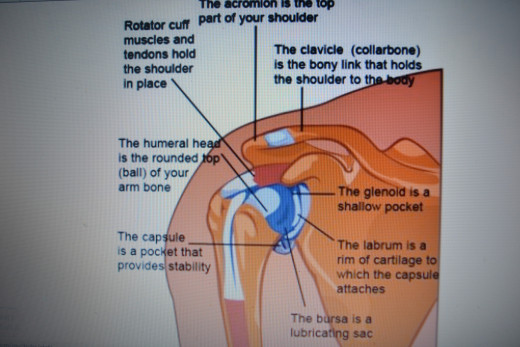

Conclusion
Given the sheer numbers of older people who are endeavouring to maintain a fit and active lifestyle, it would be unrealistic to expect that everyone will be injury free. However; the incidence of injuries can be reduced by adopting more cautious and sensible measures to exercising. Knowing our limitations and not over doing it. Always warm up before and after exercising, wear appropriate protection, etc.
The ageing body has certain limitations, and we must work within them. If we are careful and employ good practice, we can remain active for a long time. Keep up the good work, stay fit and healthy, take action to prevent and reduce sports and exercise injuries and enjoy a long and active life.
Walking for cardiovascular, Respiratory and musculoskeletal system
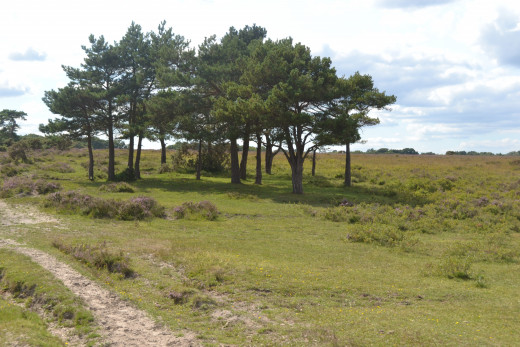

Best Sports and Exercise
How do you stay fit and healthy
